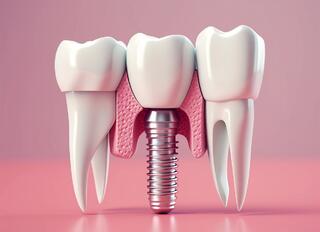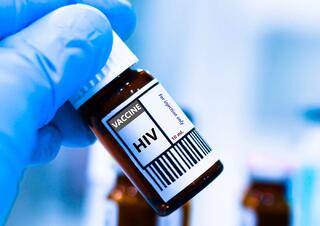Pain after dental implantation is something most patients experience, but is it normal? How long does it last? What measures can help alleviate the discomfort? You will get a detailed review, here on Dental Educ.
Pain After Implantation: Is It Normal?
Even with the use of minimally invasive implantation techniques (All-on-4/All-on-6), discomfort following surgical intervention in the bone tissue is a natural bodily reaction. Most often, patients begin to feel itching and burning a few hours after surgery (as the anesthesia wears off). These sensations are localized directly at the site where the implant was placed.
Types of pain:
- aching,
- sharp,
- pressing,
- or cutting.
Other bodily reactions may include: swelling of the lips and cheeks, and tissue tightness.
Can pain appear in other parts of the jaw? Yes. Radiating pain is possible, but it should not immediately be classified as pathological. On average, all the described symptoms last from 2-3 days to 1-2 weeks. Their duration and intensity depend on the complexity of the surgery and the number of titanium rods implanted.
Pain During Implantation
Regardless of the chosen protocol and the number of implants, the patient feels no pain during surgery. Modern dentistry uses powerful anesthetics that can prevent discomfort for 3-12 hours.
Depending on the clinical picture, the following types of anesthesia are used:
-
Local Anesthesia.
The most common and safest option. The doctor injects the area where the artificial root is to be placed. The gums become completely numb and lose sensitivity for several hours. Commonly used drugs: Scandonest, Ultracain, Articaine. -
Anxiolysis.
The same anesthesia, but with a mild calming effect. It helps the patient relieve emotional tension while remaining fully conscious. This is prescribed for patients with a low pain threshold and cardiovascular diseases. -
Various Types of Sedation (Minimal, Moderate, Deep).
The first two involve a twilight state where the patient is fully relaxed but remains conscious. Deep sedation is treatment in a sleep-like state, combined with local anesthesia at the implant site. Commonly used drugs: Propofol, Sodium Thiopental, Midazolam. -
General Anesthesia.
Used less frequently than the other types. It is applied in complex, lengthy surgeries and in cases with one of the following contraindications: mental disorders, allergy to other types of anesthesia, gag reflex. Commonly used drugs: Xenon, Sevoflurane, Forane.
Localization and Types of Pain
Around the Implant
During the postoperative period, you may experience a throbbing or aching pain. In some cases, this painful condition may be accompanied by a fever and pus formation when pressed. If you notice the latter, it's important to see a doctor.
Around Neighboring Teeth
Discomfort around neighboring teeth often arises when the patient does not follow oral hygiene recommendations provided by the doctor.
There are other causes as well. For instance, sharp pain can indicate damaged nerve endings. Aching pain may occur due to an infection in the inflamed soft tissues. A pressing sensation may signify a poorly fitted crown that irritates a neighboring tooth (the crown may be improperly sized or placed too close to the healthy tooth).
In the Ear
It is considered normal if ear pain appears and gradually fades during the first week, after implantation in the lower jaw. However, if the pain persists and is accompanied by numbness in the teeth, cheek, or chin, you should visit your doctor. It’s possible that the trigeminal nerve was affected during the placement of the titanium rod.
After Prosthesis Placement
In this situation, pain is indeed possible. It is usually localized in the gums. The causes of discomfort can include:
- The patient does not follow the dentist’s recommendations and instructions while wearing the temporary prosthesis.
-
The prosthetic structure was improperly made (incorrect sizing).
If discomfort is felt immediately after the anesthesia wears off (on the day of fixation), the doctor may need to adjust the shape or placement of the prosthesis.
The First Week After Surgery
In the first days after surgery, mild bleeding and swelling of the mucous membrane are common. You may also notice a bluish discoloration of the gum in the area where the implant was placed. Occasionally, headaches or a sore throat may be experienced during the first 2-3 days. All of these symptoms are considered normal and usually subside within 4-6 days.
The Second Week After Surgery
By this time, the swelling, bleeding, and gum discoloration usually subside, but discomfort and unpleasant sensations may persist for up to 14 days post-surgery. If the pain has not diminished after the first two weeks and instead worsens, accompanied by a fever, you should see a doctor. These symptoms are typical of an infection, which can lead to the rejection of the titanium root.
A Few Months After Implantation
The onset of sharp pain 2-3 months after implantation is usually related to one of the following causes:
- Inflammation in the gum. Medical treatment is required.
- Implant rejection. Modern titanium implants have a success rate of 98-99%. The risk of rejection is less than 1%. However, if rejection occurs, the implant must be removed.
- Loosening of the implant cap or temporary crown abutment. They can become loose and irritate the gum, causing discomfort. It's important to visit the dental clinic for removal, cleaning, and reinstallation of the components.
What Not to Do
Do not attempt to self-prescribe medications or preventive measures to alleviate pain. Such efforts may only worsen the condition. For example, the patient may temporarily relieve discomfort without addressing the underlying issue, leading to more severe complications in the end.
It’s best to trust a dentist to select the appropriate pain relievers and create a treatment plan. The dentist will conduct a thorough examination and provide the necessary recommendations based on the clinical situation.
Doctor's Orders for Reducing Pain

- Follow all oral care recommendations such as: brushing, flossing, and rinsing with antiseptic solutions after meals.
- Avoid alcohol and smoking during the osseointegration period of the artificial root. If quitting smoking completely is not possible, reduce the number of cigarettes per day to a minimum or switch to electronic alternatives. After smoking, doctors recommend using an antiseptic rinse with Chlorhexidine or Miramistin.
- For the first 2-3 months, eat primarily soft, finely ground foods.
- Avoid hot and cold foods/drinks for 3-4 weeks.
- Take antibiotics strictly according to the prescribed schedule and dosage (Amoxiclav, Flemoxin, Lincomycin).
- Strictly following your doctor’s recommendations will help reduce the risk of pain and complications.
Possible Complications
We can divide them into two groups. The first includes natural complications that resolve within 3-7 days. The second includes dangerous conditions that require medical attention.
According to results published in the scientific journal Implant Dentistry, postoperative complications of varying degrees can occur in 1-2.4% of cases. In most instances, their development is associated with patients failing to follow the dentist’s recommendations and restrictions during the implant’s osseointegration period.
| Symptom | Normal | Dangerous |
|---|---|---|
| Mild Numbness | Depending on the complexity of the surgery, it passes within 24 hours. | Numbness does not subside within 3-5 days. A nerve might have been affected during implant placement. |
| Mucosal Bleeding | Minor bleeding can occur for a week, especially if bone grafting was performed. | Significant bleeding that doesn’t stop. Blood vessels might be damaged. |
| Gum Swelling | Acceptable for 2-7 days. | Swelling does not subside after a week, it increases in size, and is painful when touched. |
| Jaw Pain | Pain is felt after the anesthesia wears off. The peak of the pain occurs within 2-3 days, then it subsides and gradually disappears within 4-5 days. | Pain worsens and does not subside even after taking painkillers. This may indicate damage to the nerve or soft tissue inflammation. |
Preventing Complications and Improving the Healing Process
-
Swelling and puffiness.
To reduce the intensity of swelling, the doctor may recommend applying a cold compress to the area where the artificial root was placed for 15-20 minutes. This procedure should be repeated every 30-40 minutes, especially during the first 24 hours after implantation. -
Gum bleeding.
Medications without acetylsalicylic acid are prescribed. This helps minimize the risk of bleeding and accelerates the regeneration of damaged soft tissues. -
Peri-implantitis (inflammation of the mucous and bone tissue around the
implant).
It is most often treated with conservative methods, including professional oral hygiene, removal of granulation tissue, cleaning and polishing of the implant surface, and antibacterial therapy. In more severe cases, surgical treatment is required.
In most cases, these and other infectious conditions (such as fistulas or implant mobility) can be managed with medications and antibacterial agents. If these measures prove ineffective, bone regeneration is performed. If this also fails, the implant is removed and reinstalled either immediately following the same protocol or after 3-6 months, depending on the size of the alveolar ridge.
Rinsing with a salt solution (1 teaspoon of salt in 200 ml of warm water) can help accelerate the regeneration of damaged tissues after implantation.
When to Seek Immediate Consultation
If you experience any of the following symptoms:
- A persistent fever lasting more than 1-2 weeks.
- Pus discharge when pressing on the area where the artificial tooth was implanted.
- Swelling and puffiness that doesn’t subside within 7 days after surgery, increases in size, and becomes painful to the touch.
- Painkillers do not relieve discomfort, and the pain intensifies.
- Bleeding of the mucosa for more than 7 days.
- Numbness in the cheek or gum does not return 2-3 days after surgery.
Frequently Asked Questions
How long does the pain last after dental implantation?
On average, pain lasts from 2 to 14 days. In the first few days, there may be sharp pain that gradually subsides. If the pain persists for more than 2 weeks or intensifies, it may be a sign of inflammation, infection, or other complications requiring medical attention.
What painkillers can be taken after dental implantation?
The doctor usually prescribes non-steroidal, anti-inflammatory drugs such as Ibuprofen or Paracetamol. It is important to follow the doctor's instructions and not exceed the prescribed dosage. Self-medication may lead to complications.
What should I do if swelling occurs after implantation?
Swelling is a natural reaction of the body to surgery. To reduce it, cold compresses can be applied to the cheek area for 15-20 minutes every 30-40 minutes. If swelling does not subside after a week or is accompanied by pus and fever, you should immediately contact your doctor.
When should I see a doctor after implantation?
If pain does not subside after 2 weeks, pus appears, fever increases, bleeding persists, or facial numbness does not return after surgery, it is necessary to see a doctor immediately to prevent serious complications.
Can I smoke after dental implantation?
Smoking slows down the healing process and increases the risk of implant rejection. Ideally, it is best to avoid smoking during the entire osseointegration period (3-6 months). If quitting is not possible, it is recommended to reduce the number of cigarettes and rinse the mouth with antiseptics after smoking.
Why is there pain in neighboring teeth after implantation?
Pain in neighboring teeth may occur due to inflammation of the soft tissues or damage to nerve endings. It can also be related to an improperly placed crown that puts pressure on adjacent teeth. In any case, if the pain persists for more than a few days, you should consult a dentist.
Can I exercise after dental implantation?
Intensive physical activity should be avoided in the first few days after surgery as it may cause bleeding or increase swelling. The doctor will recommend resuming physical activity after 1-2 weeks when the main symptoms begin to subside.









